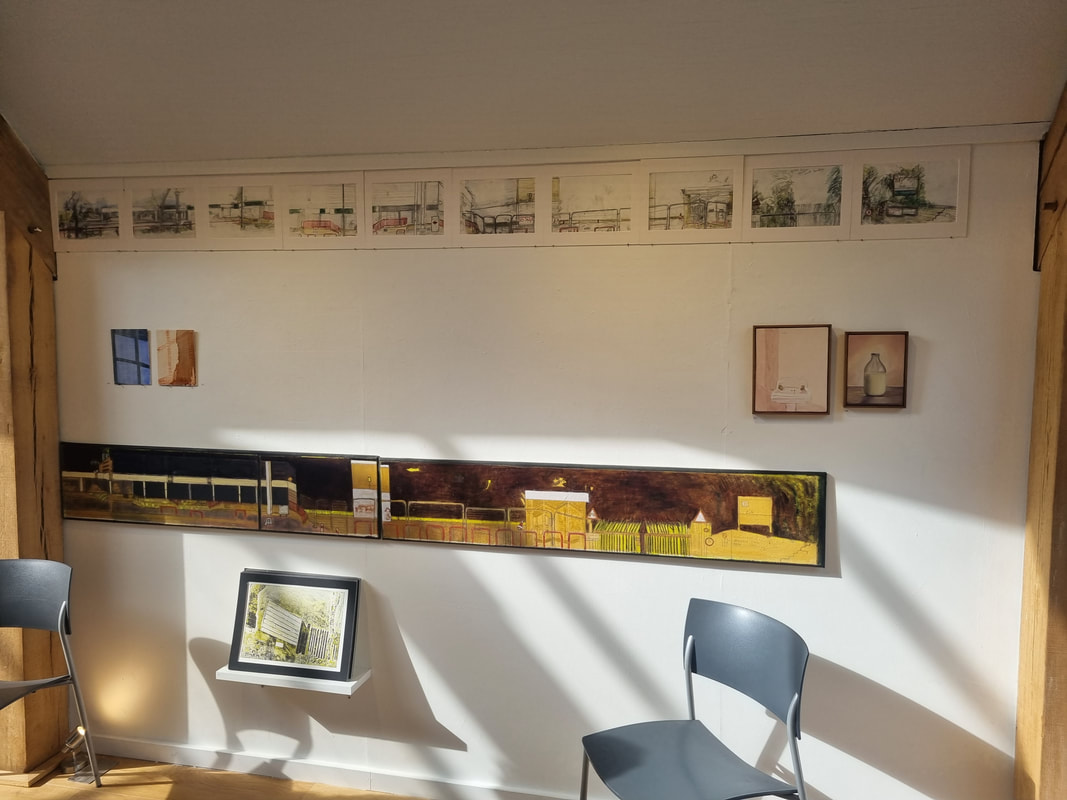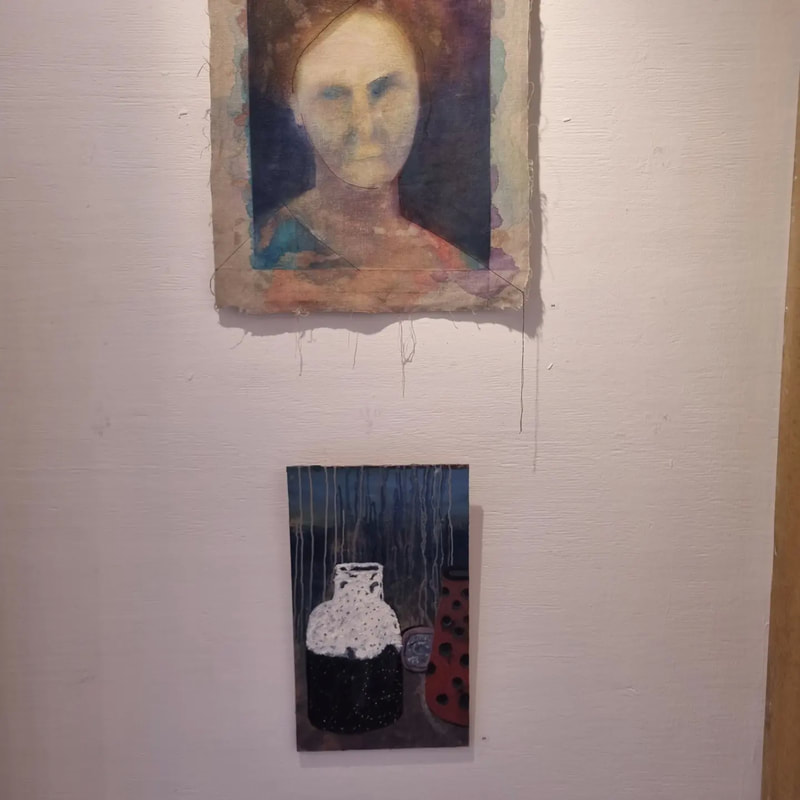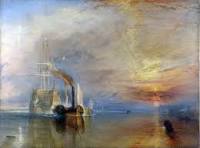|
At the beginning of June I was in Penzance for the end of Studio Practice group show at the Tremenheer Gallery, part of the Tremenheer sculpture gardens. I have written more about the gardens themselves here, and I would say again what I said there, it is highly worth visiting in its own right. There were I think about 30 exhibitors. I had been for the duration of the course in group B and we finally got to meet group A, see their art, see their reaction to our art. It is always an inspiring experience doing this. The gallery itself is an odd structure. Wooden and churchlike, it would not be out of place at the head of a Norwegian fjord. It has two floors. The ground floor is large but intersected with wooden beams that break up the space and make for ready made individual nooks and segments. The upstairs is long and thing, rising into the triangular roof, and has a large window at one end with a spectacular view of the bay and St Michaels Mount. There is a lot of natural light in the gallery. Our work was hung by the course leaders Dan Pyne and Jesse Leroy. I quite like doing this, leaving my work with other people and seeing what they do with it. Many artists are possessive of their work at this stage, and in some contexts I definitely can be in some contexts, but not here with people I trust. Also in a show like this, where you are exhibiting with other people, it is not just about you. The primary focus is to hang a good show. While it may not have your favourite pieces in it, having a good show overall will show you in a better light I think. I had taken down 8 pieces. 4 still life, 1 abstract and 3 landscapes. This is the other thing that is interesting about show like this, other people’s perception of which of your work is good, is often different from yours. My favourite pieces of the 8 were the two weir paintings. I could of just taken them and forced my hand but I deliberately didn’t because I wanted to see which they chose. They chose the still life paintings. This echoes a theme I have spoken about before in my podcast what are you making, in that my work seems to have two audiences; the art community which prefers my more out there still life work and the general public which prefers my landscapes and more straightforward paintings. What was interesting, was not just seeing the paintings they chose, but how they hung them. To break up the view as you entered and to divert people left or right, an interesting tent structure was put in the entrance way. Paintings were then grouped sort of thematically in that those with a similar energy were put together, with the work running round the room from the more vibrant, to the calmer and back again. The eye line was also diverted. Not just a consistent museum hang (with everything at the same level), but different sized works at different points. Consideration was also given to sight lines so that paintings that could be seen from different parts of the room complimented or played of each other. This was a very interesting idea to be exposed to. The purpose of it was to arrest people’s attention, to not just have them quickly scan round the room and look at all the paintings. So eyeline was broken up by sculptures, against the wall as well as in the room, paintings of different size and different media, and hung at different levels. All designed to make people pause and look again. It was very effective and made me thing in more detail about how to hang a show. My paintings were spread out, others had all their paintings in the same section. One of mine greeted you as you entered which made me happy. While people were looking around the show we did a group crit and again the feedback I received echoed what I said above, that and my paintings should be framed, the next thing to tackle.
1 Comment
Not an original quote but one that really struck me, it was imparted to me at Newlyn School of art but I forget the original derivation. Its an interesting idea, i.e. that the title of a painting (or indeed anything) can impart an extra layer of meaning onto a piece. It is something I have been thinking about quite a lot since I heard about it. Some titles are of course strictly functional i.e. Haystacks at Dusk. Or Portrait of a Society Lady. These do add a bit of an extra layer but they are more simply labels by which to identify the painting rather than adding anything to the art itself. Often of course these titles are not given by the artist themselves but by later collectors, museums archivists as a way of identifying the works.
You may well be thinking that this is a modern phenomenon, used for abstract and conceptual pieces (more of which later). But I think it has a resonance before that. Sometimes of course it is to tell you what you are looking at, a mythical or religious scene (and again I suppose many of these titles were applied afterwards). Difficult to know if it was conscious decision but for example Turner was good at titles. His masterpiece (and one of my favourite paintings) The Fighting Temeraire is a good example. The painting itself if you haven’t seen it is a ghostly softly lit painting of an old sailing warship being towed by a tug. It is being towed for scrap. Now he could of course have called it Ship being towed for scrap, but by calling it the Fighting Temeraire it adds an extra mournful wistful quality to the painting, at least I think so. This idea of course acquires extra significance as soon as you move into abstract and conceptual art. And of course some artists want to avoid this imposition of an additional meaning so you get things being called Untitled (although as above they often end up being given a name), or as in the case of Pollock, simply the date the painting was completed. Even doing that you are saying something of course, you are saying something about how you think the work should be regarded. There is I think a certain amount of pretentiousness about it, it smacks of self importance, or sometimes simply of laziness. This is probably a personal bias because I like a title. Some of them are quite poetic. Some of them of course overcook it and become far to pretentious in their own right.). And of course some of them do cause you to re-assess the piece of work significantly. I like that sensation actually, you see a piece of art, you see the title and then it can be like you see a different piece of art. |
Archives
June 2024
Categories |






 RSS Feed
RSS Feed